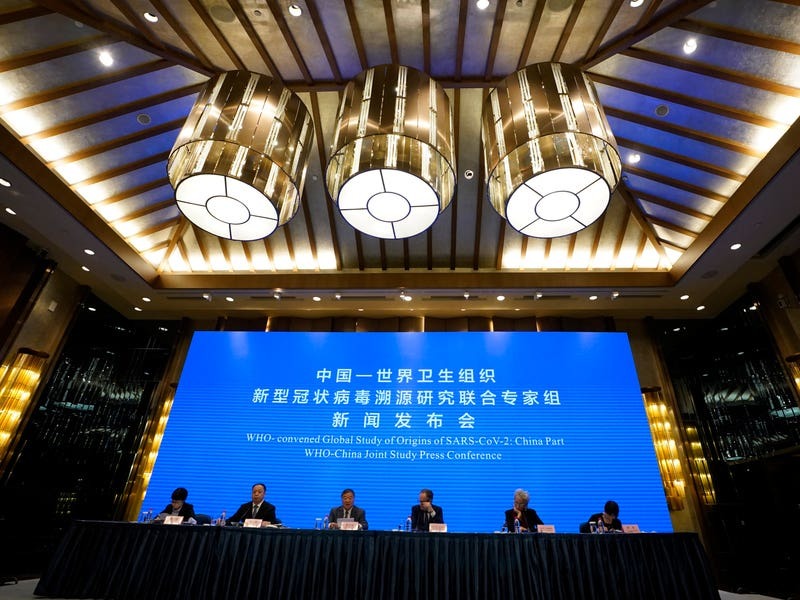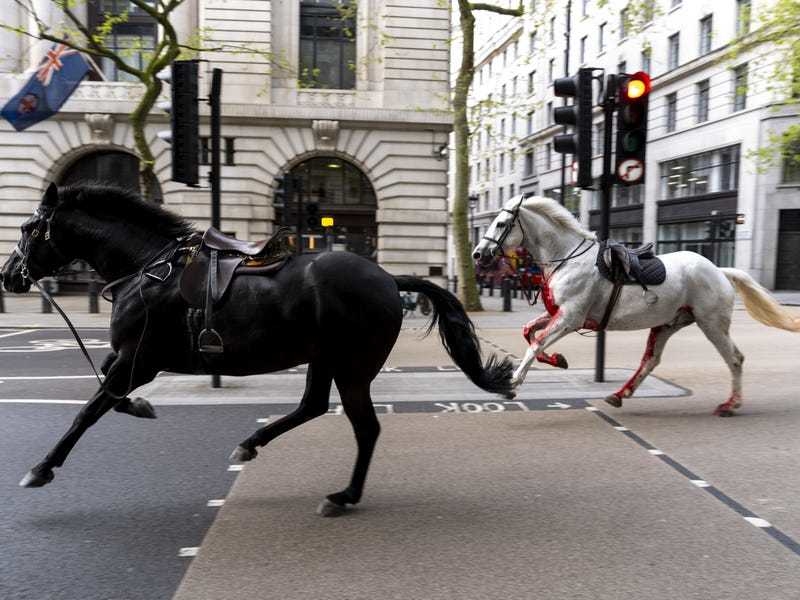The virus which causes Covid-19 is “extremely unlikely” to have entered the human population as a result of a laboratory-related incident, global health leaders have said.
Sars-CoV-2 “may have originated from zoonotic transmission”, meaning it passed from animals to humans, a team of experts from China and the World Health Organisation (WHO) concluded.
Experts said the early findings indicate that the virus was introduced to humans through an “intermediary host”, which means it jumps from one species to another, and then jumps from the second species to humans.
But the “reservoir hosts” – the animals in which the virus originated – remain to be identified, they told a press conference.
This case did not have any links to the animal market which was initially thought to be where the virus “spillover” from animals to humans occurred.
China has faced claims that the Wuhan Institute of Virology could be the suspected source of the Covid-19 virus.
Dr Peter Ben Embarek, leader of the WHO team investigating the origins of the virus in Wuhan, said: “The findings suggest lab incident hypothesis is extremely unlikely to explain the introduction of the virus into the human population.”
Investigators looked at four hypotheses when examining the possible origins of the virus:
– Direct transmission from an animal species into the human population.
– The introduction of the virus from an intermediary host species through another animal species “potentially closer to humans” where the virus could adapt, circulate and then jump to humans.
– The food chain, in particular the potential for frozen products acting as a “surface” for the transmission of the virus.
– A lab-related incident.
Dr Embarek said: “Our initial findings suggest that the introduction through an intermediary host is the most likely pathway and one that we will require more studies and more specific targeted research.”

“There had been no publication, no reports of this virus or another virus extremely closely linked to this being worked with in any other laboratory in the world.”
He said that investigators examined staff monitoring programmes and audits in research labs, adding: “We looked for examples at the Wuhan Institute for Virology and the state of that laboratory and it was very unlikely that anything could escape from such a place.”
WHO experts have been probing the origins of the virus in the Chinese city and have spent four weeks there.
Meanwhile, there is no evidence that the virus was present in Wuhan before December 2019, they said.
The experts added that they “don’t know” the exact role of Wuhan’s Huanan Seafood Wholesale Market in the origin of the virus.
A cluster of cases was linked to the market, but officials also found cases among people who had no ties to the market.
Some had links to other markets and others had no links to markets at all, they said.
“Evidence from surveys and targeted studies have so far shown that coronaviruses most highly related to Sars-CoV-2 are to be found in bats and pangolins, suggesting these mammals may be the reservoir of the virus that causes Covid-19.
“However, the viruses identified so far from neither of these species are sufficiently similar to Sars-CoV-2 to serve as direct progenitor of Sars-CoV-2.”
He said that studies examining other animals as “potential reservoirs” are “massively under sampled” and the research is not adequate.
On Wuhan’s Huanan Seafood Wholesale Market, he added: “Substantial transmission of Sars-CoV-2 infection occurred in the population of Wuhan in December 2019, with most cases reported in the second half of that month.
“Many early reported cases were associated with Huanan market, nevertheless transmission was occurring elsewhere in Wuhan at the same time.
“It is not possible on the basis of the current epidemiological information to determine how Sars-CoV-2 was introduced into the market.”
He added: “Huanan market may not be the first place that had the outbreak and it is not the place that witnessed the earliest case either.

“The earliest case which has an association with Huanan seafood market was December 12.
“The December 8 case had no relationship and no association with Huanan seafood market.”
Dr Embarek added: “We don’t know the exact role of the Huanan market, we know there was spread among people who work and live and visited the market throughout December. How it was introduced and spread within the market is still unknown.”
He added: “The market probably was a setting where that kind of spread-out happens easily but it is not the whole story – there was also spread among individuals who were not linked to this market, they were linked to other markets, no markets, so the picture is not clear in that respect.”
Since the virus was first detected in December 2019, there have been more than 100 million cases around the globe and 2.3 million deaths.
The team has made a series of recommendations for future studies to examine the origins of the virus – including a direct spillover from animals to humans or the virus coming to humans through an “intermediary host” – and has also called for more research into frozen foods.
But it said it does not need to research further the possibility that the virus came from a lab.
Meanwhile, the WHO announced that 130 countries, with a combined population of 2.5 billion people, have yet to administer a single Covid-19 vaccine.
Dr Tedros Adhanom Ghebreyesus said that “inequities are increasing”, adding that more than 90% of countries now rolling out vaccines are wealthy.
Seventy-five percent of the 130 million deployed doses have been in only 10 countries.
He told a meeting of health ministers from various countries around the world: “The longer the Covid-19 virus circulates, the more it can mutate, potentially making current tests, treatments and vaccines less effective.
“We have already seen several variants emerge that appear to be significantly more transmissible.
“And as long as the pandemic drags on, so will the economic impacts.
“Until we end the pandemic everywhere, we will not end it anywhere. This is not an empty slogan, it is a hard reality.”






